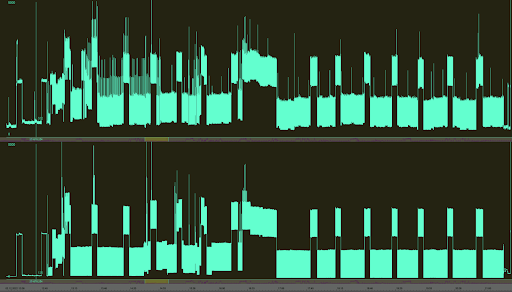Some appliances can create a continuous electrical hum.
In the first month after installing the Sense Home Energy Monitor, it will find a handful of devices in most homes, starting with appliances that cycle on and off at regular intervals. Over the next 12 months, it will typically find 30 separate device types in the average Sense home. But in some homes, fewer devices are detected and it can seem like Sense isn’t working. What’s up?
A variety of factors can impact device detection in your home. Some are simple – like incorrect installation or weak wifi issues, which can be diagnosed and corrected with help from our Support team. But some homes have another issue: their appliances and home electronics are generating lots of background “chatter” that makes it harder for the Sense machine learning algorithms to sort out individual devices.
To understand how Sense detects individual devices, it’s helpful to think about an orchestra with many instruments playing. The machine learning algorithms built into Sense try to separate the sound of each individual instrument in your home from the background chatter of all the other activities in your home, and then recognize patterns in these voices to help determine what device they might be. The more background chatter there is, the harder it is to make out specific instruments.
Here’s an example of a home that is electrically “quiet.” The baseline electricity stays low until something turns on, which shows up as a spike in energy usage. In this home, the electrical signature of each appliance or device shows up clearly. To compare this to your home, look at the Power Meter view in the Sense Home app and see whether there are sharp peaks and valleys.
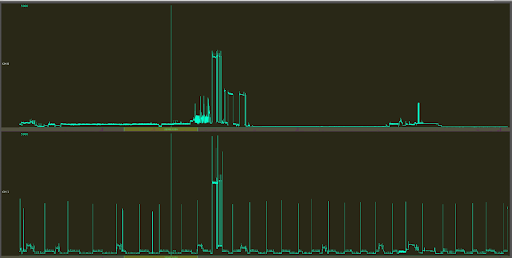
An example of an electrically “quiet” home during a five hour period
So what are some aspects of a home that could create a lot of background chatter that interferes with device detection?
1. The wattage in your home has “high variability”
Sense works by analyzing changes in electrical usage patterns. When appliances run continuously or their energy waveforms vary up and down in an inconsistent pattern, they don’t have a unique energy signature to detect.
Appliances and other devices can have high variability. For instance, while most washing machines have distinctive energy patterns, the second part of a washing machine cycle can look like random electrical consumption. If this is happening for your washer, a smart plug or Sense Flex sensor can help track it throughout its entire cycle.
The figure below shows an electrical signature of a 2000W device that cycles over the course of five hours. But the device is not quiet at 2000W; while it’s running, consumption changes rapidly in a 300W range. If the Power Meter view of your home looks like this, device detection may take longer.
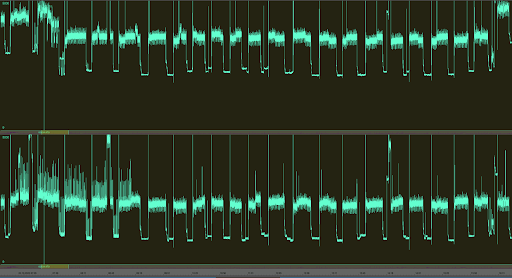
The following image shows the same signature but looking at variation in just a few seconds of electrical activity. When other household devices turn on and off, their energy signatures are overlaid by this ongoing pattern, like the loud blast of a trumpet drowning out the rest of the instruments in an orchestra.
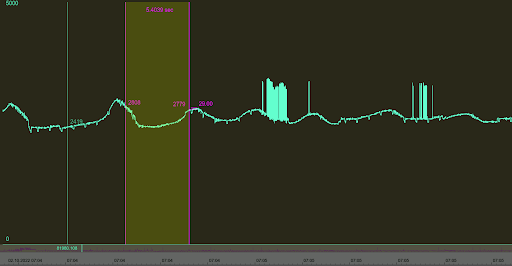
2. Your baseboard heaters cycle frequently
Some heating systems have variations that make it much harder to detect changes because they mask the on/off transitions that Sense uses for part of the device detection capabilities. This is the energy pattern for a 1 kW baseboard heating unit that cycles on and off at 1-second intervals (again, this shows a five-hour pattern). This type of baseboard heating is more common in Canada.
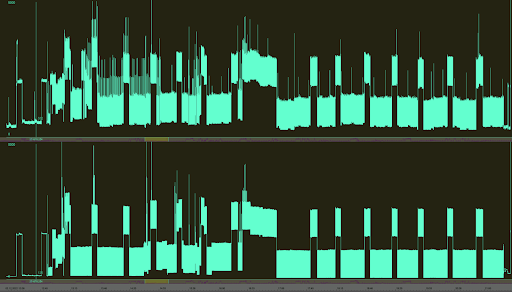
3. There are multiple heat pumps in your home.
This next image shows multiple variable speed heat pumps that are on most of the time. Notice how the electrical signature varies up and down in a pattern that’s not predictable. Sense algorithms could potentially identify a single heat pump but the variability in this signal makes it difficult to detect which heat pump is turning on and off if there’s more than one.
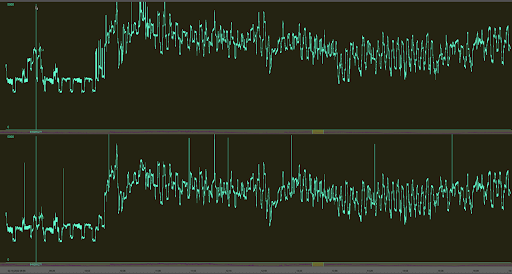
You can see this even more clearly in a detailed look of just a few minutes of the same electrical pattern.
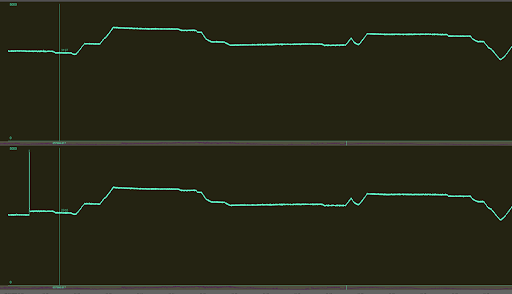
To address these high-variability issues, you can install Sense Flex add-on sensors in your electrical panel for those circuits to identify and track the energy signature.
4. Your home has lots of electrical devices running all the time
Some household appliances, such as coffeemakers, use high levels of electricity for long periods of time, creating an electrical hum. Other devices, such as consumer electronics, always use a trickle of electricity, even when you’ve turned them off with the remote control. So how can you reduce the electrical noise and save on your electricity bills?
Here are a few tips:
If you have an electric coffee maker with a warming mode (especially Keurig brand), check the settings and set it to eco-mode, which will reduce the ongoing wattage–and save you money as a bonus.
If your computer, monitor, and printers run all the time, put your office equipment on an energy-aware smart strip to track each one, and schedule non-required equipment to turn off when not in use.
If you have an entertainment center with components that turn on automatically, put them on a smart strip and schedule them to turn off overnight. This approach still allows automatic firmware updates for smart TVs and other components.
Have some tips for managing your electrically busy home? Share them with us on Twitter @Sense!
